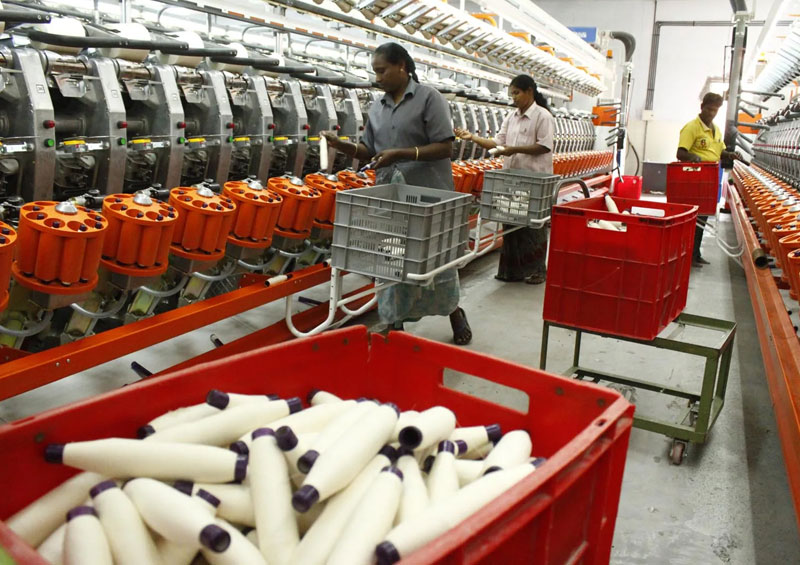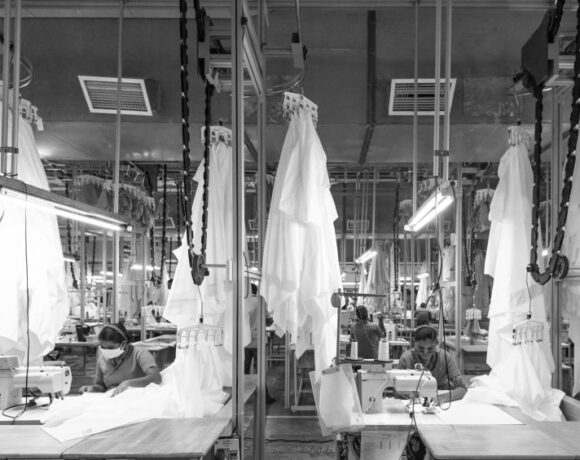Rightly-Skilled Manpower Will Drive T&C Sector Growth

The $150-billion Indian textiles and clothing (T&C) sector is expected to require a large pool of rightly-skilled workforce to achieve its aim of building a globally competitive production base and to seize the opportunities that are emerging in the world market. As per one estimate, the industry may need around 10 million skilled and semi-skilled personnel. According to experts, building up this level of manpower would require concerted efforts such as policy-backed upskilling and reskilling measures on the part of all stakeholders involved. They are also of the view that any compromise on this front may not yield the desired results which the industry and policy makers are lately aiming at through multiple initiatives.
“No doubt, there is a big shortage of trained manpower in our T&C sector. Going forward, as we are planning to not only retain our position but also enlarge our share in the global market, we need to seriously address this issue in a more holistic manner. Most of the efforts happening in this regard have been in isolation and hence we have not been able to generate the desired results. We need a comprehensive framework wherein stakeholders can work in a more cohesive manner,” states Dr. PR Roy, industry veteran and chairman, Diagonal Consulting (India).
Another industry veteran and past secretary general of the Confederation of Indian Textile Industry, D K Nair says that as the competition intensifies and we look to move up in the value chain with more diversified and specialised offering, we will definitely require specialised manpower to handle our processes and machines. Even in the case of traditional textiles, we are losing edge to much smaller peers in the global market due to our dwindling labour productivity.
Moreover, over the past decade-and-half, the Indian textile industry has undergone a significant transformation, driven by technology. This shift has yielded benefits such as improved productivity, minimized wastage, elevated quality control and a widened horizon for design innovations. For instance, the advent of digital printing techniques has facilitated quicker design turnovers and more intricate patterns while being environmentally conscious by reducing water usage.
However, these technological strides come at a cost. Traditional artisans and craftsmen, who once formed the backbone of this sector, are now at the crossroads, facing the risk of becoming obsolete in the face of rapid mechanization. The skillset which was revered a mere 15 years ago was rooted in manual craftsmanship and experiential knowledge. Today, while such skills are still cherished, there is an undeniable push towards understanding state-of-the-art machinery, software, sustainable practices and the digital marketplace.
“As countries like Bangladesh and Vietnam emerge as significant players, the global textile landscape is becoming increasingly competitive. For India to maintain its stature, it’s imperative not only to be cost-effective but also to deliver unparalleled quality, cutting-edge designs and sustainable solutions. Herein lies the importance of upskilling and reskilling: to harness new technologies effectively and to ensure traditional artisans remain relevant in this changing scenario,” says Balkrishan Sharma, Business Head—Spinning, Ginni Filaments Ltd.
As per NLB Services, one of the fastest-growing transformational workforce solution providers, if leveraged correctly, the manufacturing sector, led by the T&C sector, has the potential to play a vital role in transforming the future of India and making it a global superpower in the next couple of decades. As per estimates, the sector comes laden with opportunities to enable the country’s GDP to reach nearly $20 trillion by 2047. The projected growth of the manufacturing sector has also been estimated to contribute more than 20 per cent to the nation’s GDP in the future.
“This puts tremendous pressure on the manufacturing sector and its stakeholders to seize the day. With a number of manufacturing players reporting a severe scarcity of skilled resources, it’s crucial for them to bridge this gap through initiatives like upskilling, partnering with academic institutions, investing in employee retention, adopting innovations and building a healthy industry-wide ecosystem,” states Varun Sachdeva, SVP & APAC Head, NLB Services.
Quess Corp, which provides a host of technology-enabled staffing and managed outsourcing services, maintains that to overcome the shortage of skilled labour in manufacturing, HR in the sector will have to make a concentrated effort to develop the skill sets needed by the workforce internally, which many are doing by investing in the growth of their current staff.
According to a poll, 63 per cent of manufacturing organizations are currently re-training employees, while another 60 per cent are cross-training their workforce. Upskilling and reskilling programmes provide an opportunity for workers to acquire new skills that are relevant to emerging technologies and changing roles in the manufacturing industry. Such programmes can also be implemented in partnership with educational institutions, training providers and industry associations. As per a report by Deloitte, 70 per cent of manufacturing executives believe that their company’s productivity and profitability would improve if employees were upskilled or reskilled.
“To lessen the impact of the skilled labour shortage in the coming years, HR in manufacturing will have to do more than attract new talent. It will also have to invest in technology. Manufacturing organizations that are willing to invest in new equipment and better integration of the Internet of Things (IoT), robotics, 5G, edge computing, artificial intelligence and other technologies find that their products are made faster, better, with less waste and less labour,” says Girija S., VP, Quess Corp.
“By teaching machine operators how to use the new equipment, they are pushed to work smarter, not necessarily harder. They also take on more responsibility and sometimes even get a raise for their new skills. The adoption of technology can also help address the skilled labour shortage in the manufacturing industry by automating repetitive and manual tasks, allowing workers to focus on more complex tasks. This can also attract younger workers who are more comfortable with technology,” adds Girija.
Experts are also of the view that addressing these challenges necessitates robust training initiatives and a stronger synergy between academia and the industry. Modern curriculums should encompass advanced textile engineering, digital design and business strategies specific to the textile domain. Collaborations with international institutions can also infuse global best practices into the Indian framework. On the policy front, government initiatives like the Skill India campaign and incentives for workforce training need to be further expedited.














